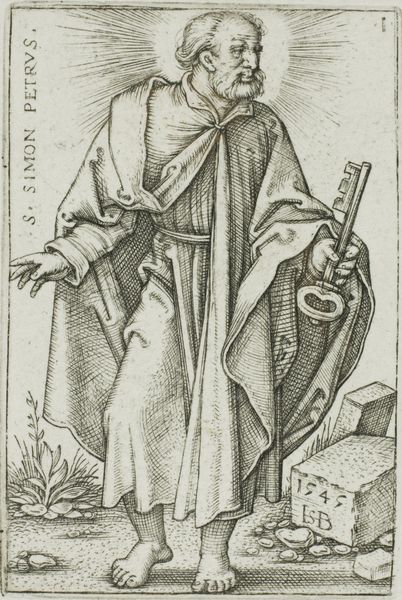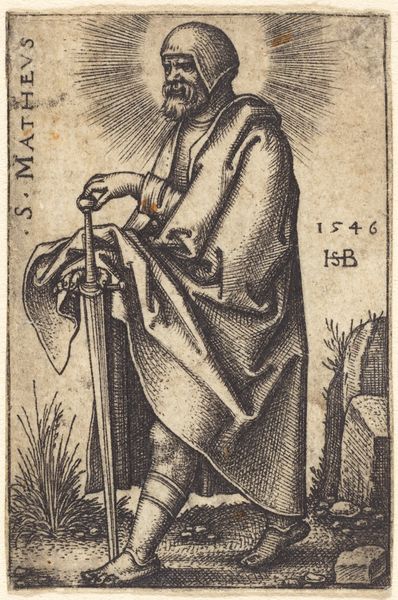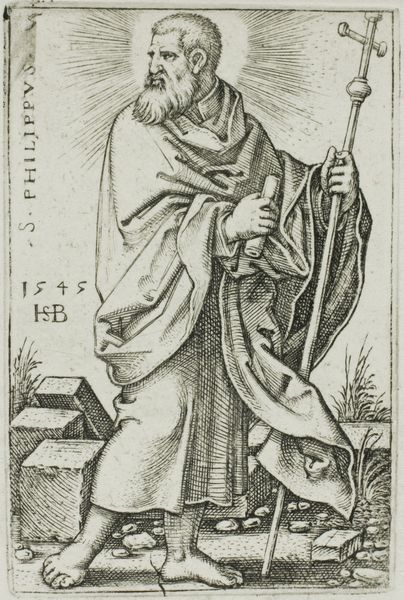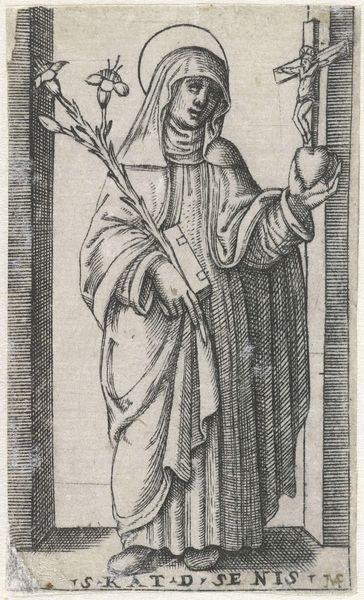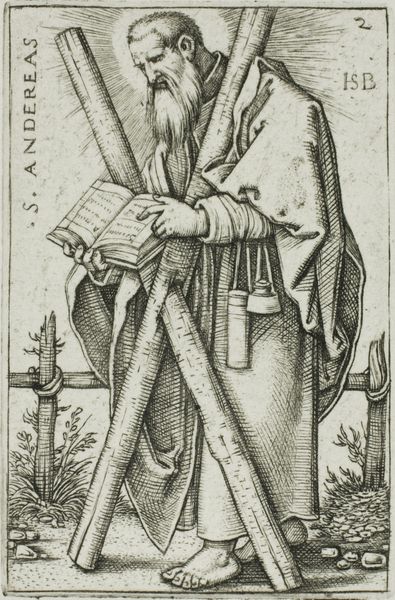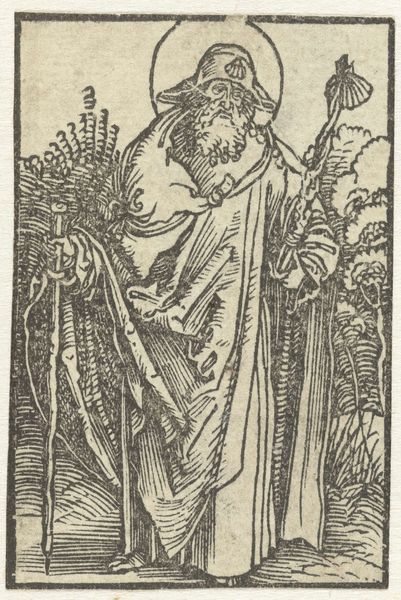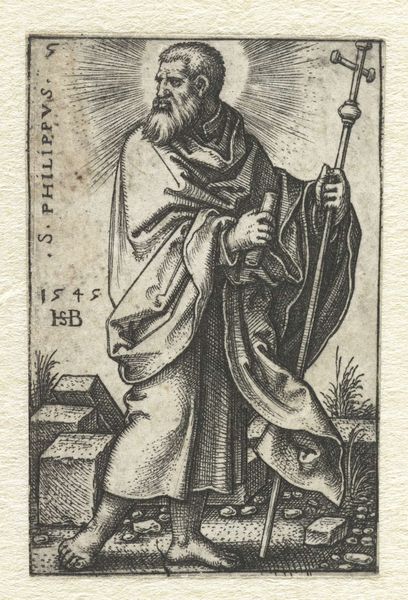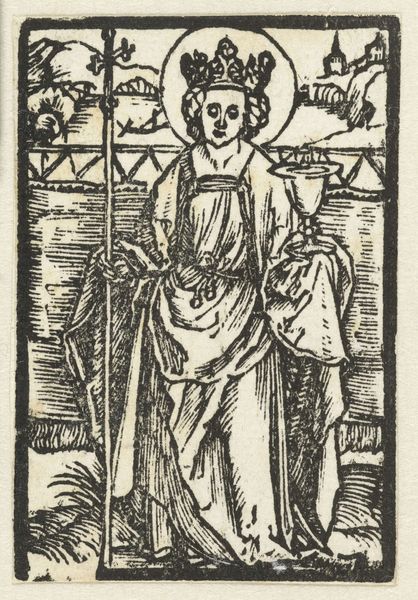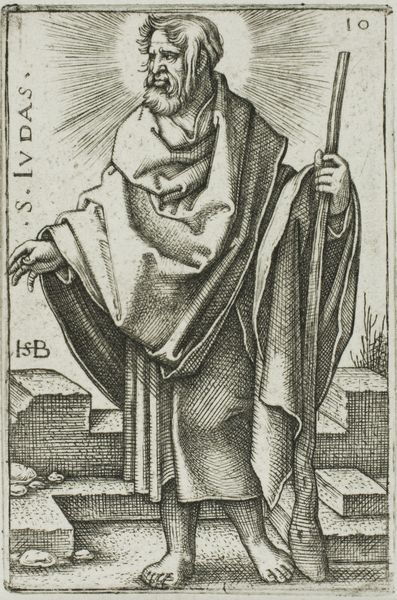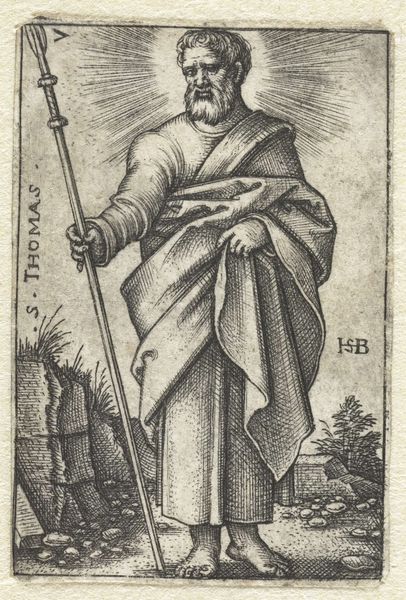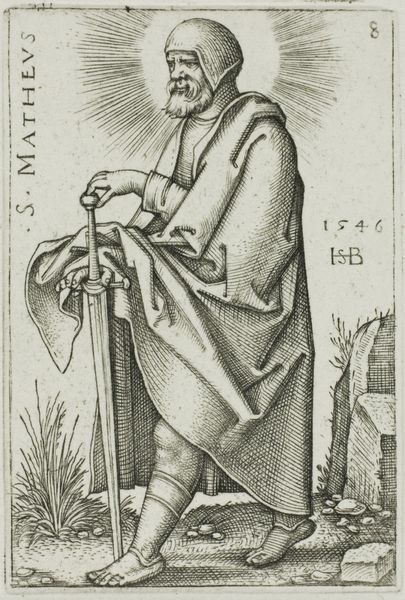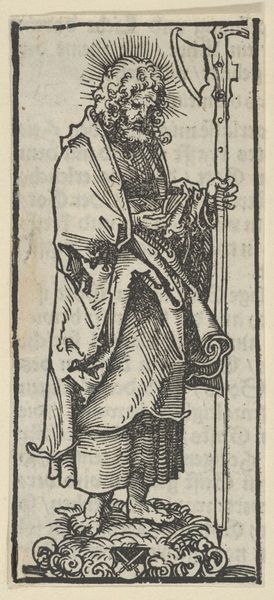
drawing, print, engraving
#
portrait
#
drawing
# print
#
figuration
#
11_renaissance
#
history-painting
#
northern-renaissance
#
engraving
Dimensions: height 46 mm, width 30 mm
Copyright: Rijks Museum: Open Domain
Editor: This is "Petrus," an engraving by Sebald Beham, from 1545. I’m struck by the contrast between the detailed textures and the almost severe expression on his face. How do you interpret this work within its historical context? Curator: Well, let’s start with who Petrus is. As Saint Peter, he holds significant religious authority. Beham, working during the Reformation, uses this image to engage with contemporary debates about religious authority, especially around papal power. Notice how Peter holds the key. How does the visual weight and detail given to this object signify its importance, and what power dynamic might that suggest during this time? Editor: So the key isn't just a symbol; it's a statement? And the print medium itself allows for wider dissemination of this statement. Curator: Exactly! Prints were powerful tools for propagating ideas during the Reformation. Beham, who faced accusations of heresy, skillfully employs religious iconography to subtly question the established order. His detailed engraving makes this Peter seem human, grounded, even vulnerable despite the symbolic key. Does that reading shift how we see Peter as a symbol of the Church? Editor: It makes him relatable, perhaps more so than if he were depicted in grander terms. Was Beham criticizing or perhaps trying to redefine religious leadership? Curator: Both! By humanizing Peter, Beham critiques the distant, often corrupt, hierarchy of the Catholic Church, while also offering a more accessible, relatable form of religious figure for the masses. Looking at the gaze, what is being hidden? What is revealed? What power does art hold when revealing that sort of perspective? Editor: I hadn't considered how Peter's human depiction itself was a political act. Seeing this artwork in the context of the Reformation gives it a whole new layer of meaning. Curator: Indeed. It invites us to consider how even seemingly straightforward religious art can be deeply entwined with broader cultural and political struggles. It serves to constantly remind ourselves of the power imbued within religious artwork during this transformational period in Europe.
Comments
No comments
Be the first to comment and join the conversation on the ultimate creative platform.
